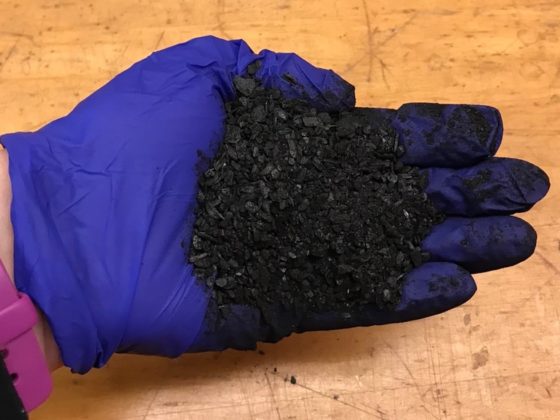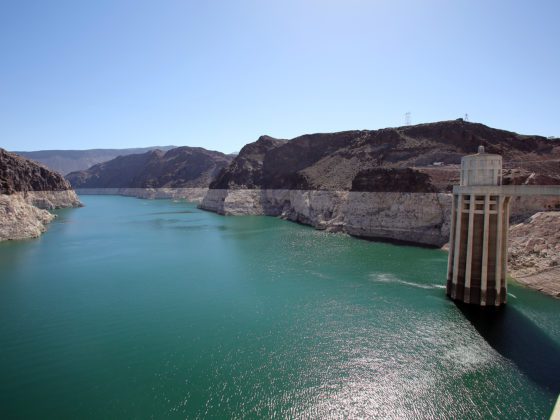In early March, just a handful of days before the Covid-19 crisis would paralyze American society, I flew to Miami to address an international meeting of the horticultural industry. Looking out the window on the approach to the Miami airport, all the profound alterations to the natural world in that part of the country were vividly on display. The coastal landscape here, like many parts of the United States and the world, is highly altered—there is the tangle of roads, there are parking lots and sprawl, and the shore and water edges are hardscaped and human-engineered. There is water and lots of shoreline edges but limited natural habitat: not a very hospitable setting for birds or any other form of non-human life, it seemed. On that arrival, I found myself thinking of how dangerous this modern Miami cityscape has become for birds.
The global picture for seabirds and shorebirds is fairly consistent with my visual impressions that day. Shorebirds and seabirds (these are not hard-and-fast categories, and there is lots of overlap between them) are not doing well. An analysis of data from monitored seabird populations from 1950 to 2010 found a nearly 70% decline over that period, likely due to a variety of threats including overfishing, habitat loss, and climate change.[1]
Increasingly we recognize both the important benefits birds provide to urban residents and the essential role cities must play in their protection and conservation. Indeed, the notion of sharing space with many other forms of life in cities—making room if you will—is a key element in the emerging vision of biophilic cities. Founded on the concept of biophilia, meaning that as a species humans are innately drawn to other life and life processes, biophilic cities put nature at the center of their design and planning. In 2013, we launched a global Biophilic Cities Network that now consists of 22 cities, and we have been working since to collect and share the innovative policies and practices of these cities and to advance this new vision of urbanism globally.[2]
Many of the cities in our network, from Wellington, New Zealand, to San Francisco, are located near oceans and expansive and wondrous marine nature. These blue biophilic cities increasingly recognize the importance of protecting and celebrating the marine nature around them, including the seabirds and shorebirds that intersect with so many human lives.[3] Cities like New York or San Francisco or Miami represent a particular version of biophilic design and planning—one that ideally integrates the blue or marine nature in deep and important ways. Shorebirds and seabirds become central players in the nature of these places.
The good news is that bird and bird conservation is now squarely on the urban agenda. In 2011, San Francisco became the first US city to adopt mandatory bird-safe design standards, and in fall 2019, New York City became the most recent, and largest, US city to adopt similar requirements (the standards go into effect in December). These new bird-safe codes mandate the use of fritted [porous] and bird-safe glass, a recognition of the hundreds of thousands of birds (by some estimated nearly a billion) that die each year in North America from bird-building strikes. More broadly, cities are beginning to understand the need to reduce urban threats to birds, as well as to positively enhance bird habitats in cities (from protecting existing wetlands and other important natural areas, to re-imagining building rooftops as bird-friendly meadows and nesting habitats).[4]
We have an ethical duty, I believe, to do what we can to protect birds, by designing buildings and urban neighborhoods that are less dangerous for them and actively enhancing habitat. As sentient creatures and magical descendants of an ancient dinosaur past, birds’ resilience in the face of human impacts is deserved but not assured.
It may be obvious that residents of cities gain much from seeing and experiencing the bird life around them. For many of us (myself included), birds provide moments of awe and delight that break up the day and offer opportunities to overcome the prevailing self- and human-centeredness of our world. Especially in the current era of coronavirus and the social (and physical) distancing we all must currently practice, birds provide a kind of solace, therapy, and constancy that is simply incalculable.
One of my lifelong favorite species is the brown pelican (Pelecanus occidentalis), a bird that not long ago was endangered. Today, brown pelicans are a ubiquitous and pleasurable sight in many coastal communities. A sight of a singular pelican, or of a group flying in remarkable precision formations, provides residents with tangible moments of delight and awe. I have watched them closely most of my life and remain astounded at their flying abilities. Like so many remarkable bird behaviors, pelicans’ ability to defy gravity evokes a sense of wonder. I find we often lack the language to adequately describe the physical feats they display.
In his new book, Our Wild Calling, Richard Louv describes awe as “what we feel during or after an encounter with something unexpected, and stimulates a sense of vastness and possibility, such as hearing thunder, listening to a moving piece of music, sensing the infinite during prayer or meditation.”[5] Birds are for me one of the most reliable and ubiquitous sources of awe. The way that brown pelicans fly in tight formations within centimeters of the crest of incoming waves, and their precision dives, are nothing short of miraculous and magical. The potential to experience, in cities, these kinds of moments of awe, is one possible way to judge the quality of city life, consistent with the vision of biophilic cities. Life is more enjoyable to be sure, but there’s more to this feeling. Emerging evidence around awe suggests that it helps us to be more generous and more likely to engage in prosocial behavior[6]: to be better human beings.
Watching pelicans is a special example of what environmental psychologists call “soft fascination.”[7] Like cloud gazing, watching pelicans is a kind of “effortless looking,” as once relaxing and immensely interesting. So many shorebirds provide similar moments of awe, often in close proximity to where many people live and work. From royal terns to laughing gulls, each brings a unique behavior and delight. Sanderlings and sandpipers scoot along the miraculous and dynamic edge of the surf, inoculating the sand (it seems) as they feed, with grace and beauty to their fast-walking movements.
There are more and more creative ways in which we can enjoy these experiences, ways we can connect to the many lifeforms around us. In blue cities, it is already a challenge to build emotional connections with the marine organisms and lifeforms that may be close by but out of sight (underwater). The digital technologies that are now so helpful as a (partial) antidote to social distancing can also be harnessed to see and experience these other marine worlds.
And of course even if we don’t see or experience these birds directly, they live wondrous lives that will fascinate and intrigue us. Knowing that red knots [a kind of sandpiper] migrate nearly 10,000 miles each way (in spring and fall) is miraculous and awe-inspiring, whether we see and experience it directly or not. Even more remarkable is the arctic tern, the ultimate Olympian in these migratory journeys, traveling pole to pole. We might be lucky to see one near a city as they stop along the way, but the knowledge alone is uplifting. These birds travel close to where many of us live, and serve to connect us in an ecological tie that is reassuring, especially in the times we are living in.
Cities can celebrate this avian wonder as well as take tangible steps to conserve and protect these birds. I don’t know if Miami has an official city bird, but St. Petersburg, a city on Florida’s Gulf Coast, has designated the brown pelican as its official city bird, a recognition of the affection residents have for this bird and of its central role in St. Petersburg’s self-impression.[8]
Other cities have taken similar steps: Houston recently adopted the yellow-crowned night heron as its official bird, while Seattle nearly two decades ago declared the great blue heron its official bird. Taking such a step is an important public statement on behalf of the birds, but it must also be followed up with action. The recognition of our biophilic sensibilities and our innate attraction to and love of birds must be backed up with tangible actions that give genuine and meaningful effect to that love.
This means tackling climate change, a major threat to the remaining habitats of many shorebirds and seabirds. Cities are uniquely positioned to reduce greenhouse gas emissions, including by moving away from car dependence (our oil dependence is a direct threat to shorebirds—many thousands of brown pelicans died in the Deepwater Horizon spill in the Gulf in 2010). And support for birds will mean ramping up our efforts to protect remaining habitat and restoring new habitats. Our partner city, Norfolk, Virginia, is pioneering an effort to forge a long-term response to sea-level rise that will depend in part on the creation of new coastal wetlands. But there is much more that will be needed: shifting away from use of damaging pesticides, dramatically reducing our wasteful patterns of artificial lighting, and reducing over-fishing and destruction of marine habitats that affect so many shorebirds and seabirds.
Shorebirds and seabirds also tie cities together in important ways. Blue biophilic cities must also collaborate to protect habitat and safe passage during migration. For me, another shorebird, the American white pelican (Pelecanus erythrorhynchos) is a case in point. This is a species that I have enjoyed watching effortlessly spiral and thermal [soar on warm air currents] in Florida, its wintering range. It is a species I also encountered in our partner city of Edmonton, Alberta, some 3,000 miles away, during its summer nesting. Protecting pelicans will require cities to think beyond their boundaries; in this case, Florida cities must also necessarily be invested in the conservation of Canada’s boreal region.
Cities can and must be leaders in the push for bird conservation. Our lives will be richer when shared with pelicans and a diverse avian community. For blue cities, the shorebirds and seabirds are an important part of the biophilia and a big part of what makes them magical places to live.
Tim Beatley is the Theresa Heinz Professor of Sustainable Communities and prolific author who has written about Green, Blue and biophilic cities.
[1] Michelle Paleczny, Edd Hammill, Vasiliki Karpouzi, and Daniel Pauly, “Population Trend of the World’s Monitored Seabirds, 1950–2010,” PLoS One 10, no. 6 (June 2015), https://journals.plos.org/plosone/article?id=10.1371/journal.pone.0129342 (accessed Apr. 27, 2020).
[2] For more information about the Biophilic Cities Network, see https://www.biophiliccities.org/.
[3] See Timothy Beatley, Blue Biophilic Cities: Nature and Resilience along the Urban Coast, Cities and the Global Politics of the Environment (Cham, Switzerland: Palgrave Macmillan, 2018).
[4] The author’s forthcoming book, Bird-Friendly Cities, is a comprehensive survey of these urban programs and policies and will be published by Island Press.
[5] Richard Louv, Our Wild Calling: How Connecting with Animals Can Transform Our Lives—and Save Theirs (Chapel Hill, NC: Algonquin Books, 2019).
[6] Paul Piff, Pia Dietze, Matthew Feinberg, Daniel M. Stancato, and Dacher Keltner, “Awe, the Small Self, and Prosocial Behavior,” Journal of Personality and Social Psychology 108, no. 6 (2015): 883–99.
[7] This is a key idea in Attention Restoration Theory; see Stephen Kaplan, “The Restorative Benefits of Nature: Toward an Integrative Framework,” Journal of Environmental Psychology 15, no. 3 (1995): 169–82.
[8] Romy Ellenbogen, “St. Petersburg Makes the Brown Pelican the Official City Bird,” Tampa Bay Times, January 9, 2020, https://www.tampabay.com/news/st-petersburg/2020/01/09/st-petersburg-makes-the-brown-pelican-the-official-city-bird/ (accessed Apr. 27, 2020).





